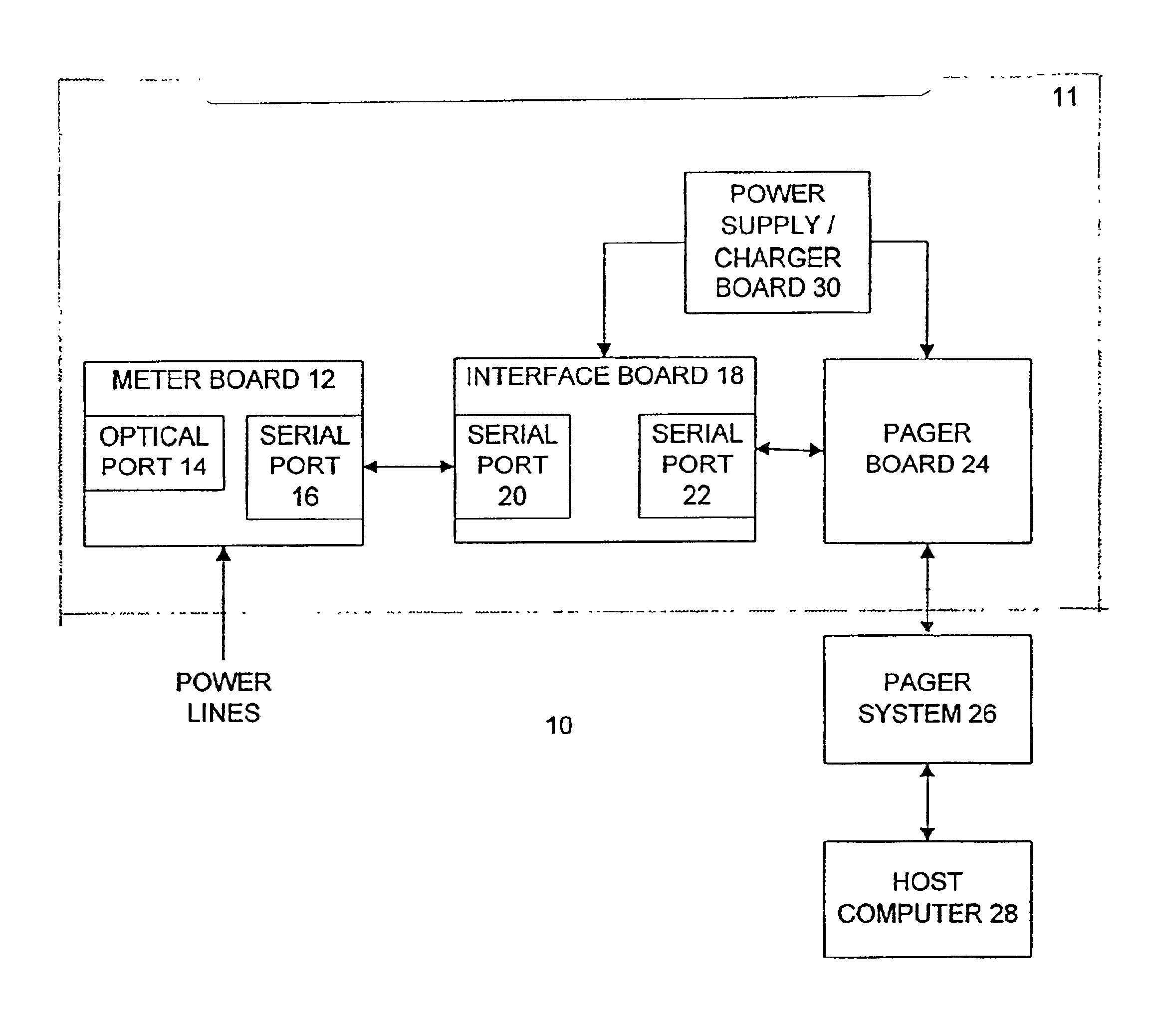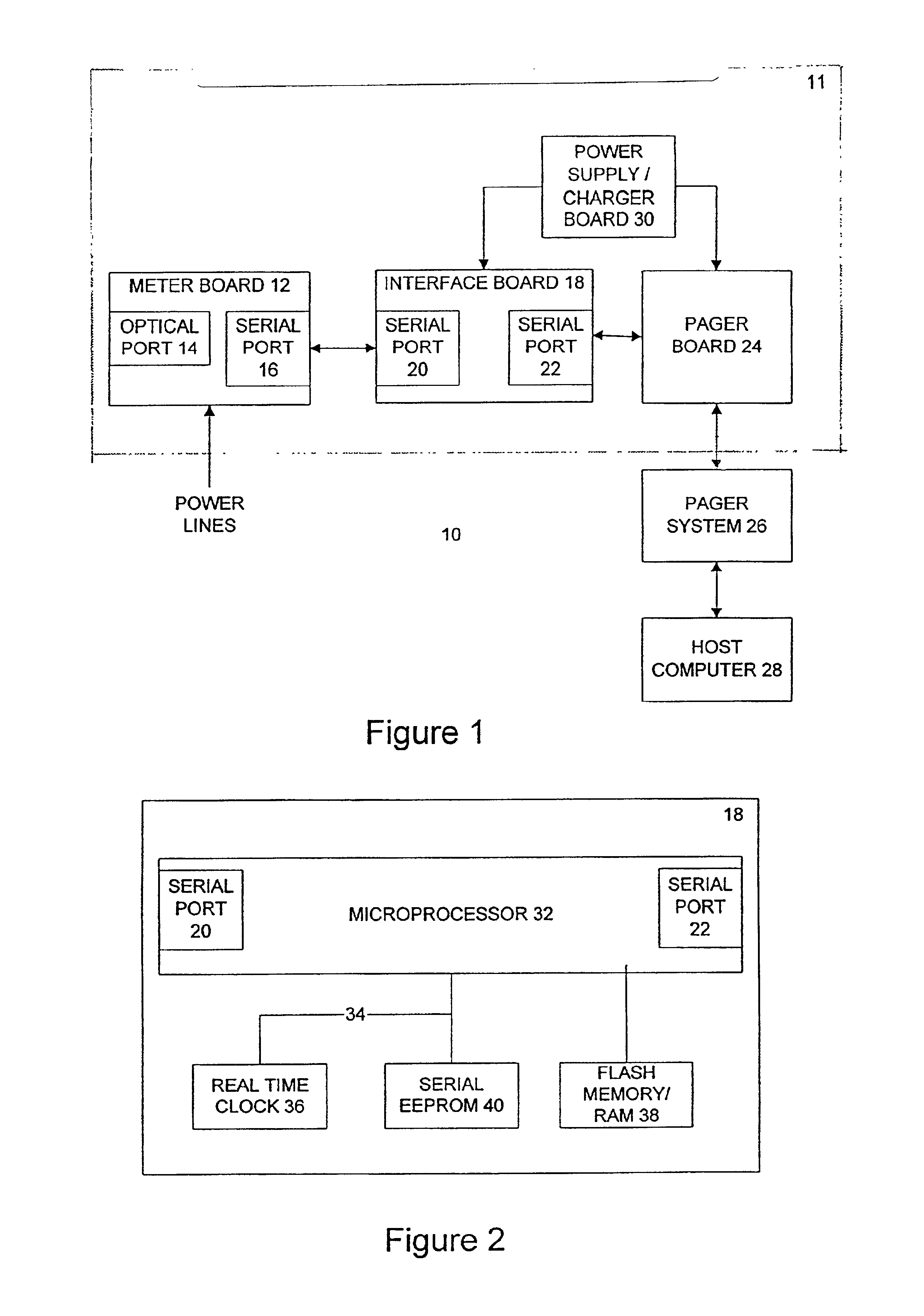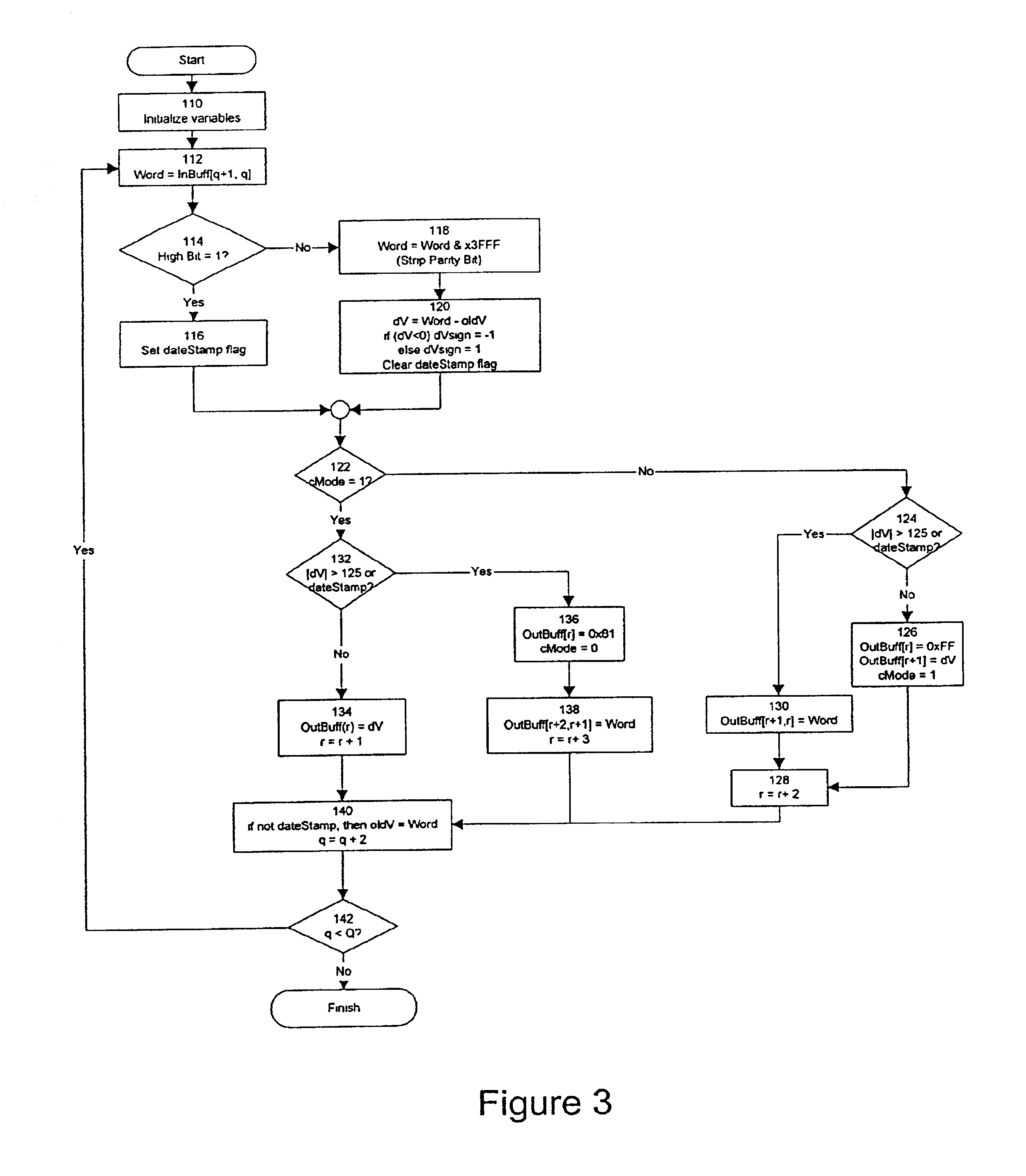Systems and methods for wirelessly transmitting data from a utility meter
a utility meter and wireless transmission technology, applied in the field of electric utility meters, can solve the problems of uneconomic widespread development of amr systems, and one such cost is associated with the transfer of data using wireless carrier services, and achieve the effect of reducing the airtime cost of transmission
- Summary
- Abstract
- Description
- Claims
- Application Information
AI Technical Summary
Benefits of technology
Problems solved by technology
Method used
Image
Examples
first embodiment
[0047]In the differential compression in the present invention, compression may turned on and off as the stream of raw data words are read from the input buffer by examining the data value of the current word to determine whether the difference between it and the data value of the last data word read can be represented by a single byte. A indicator in the form of a special byte value may be sent to indicate to the host computer 28 signifying that compression is turned on for succeeding bytes until turned off. If compression is on, then to indicate that compression will be off for successive data, a special byte value is used. Since one byte is used to indicate compression will be turned off, the other byte indicates a difference value. This can represent 255 possible values (0x00 to 0xFF provides 256 possible differences) since one value (−128) is reserved to indicate that compression is turned off. Thus, differences of −127 to +127 can be indicated. When uncompressed values are bei...
third embodiment
[0081]The differential compression process illustrated in FIG. 4 can be further modified inot the present invention by the use range-expansion byte values 126, 127, and −128 to indicate that the next difference value is to be increased in absolute value by 125, 252, or 379, respectively. If that modification is added, then the scan-ahead modification discussed above in relation to FIG. 5 should be expanded to scanning ahead past any Words that could be represented by one of the range-expansion byte values 126, 127, or −128 and a difference value to the first Word in the rest of input buffer that is either a data value that can be represented as a single-byte difference without a range-expansion byte, a data value that cannot be represented as a single-byte difference even with a range-expansion byte, or a time / date stamp. In effect, since data values represented by a range-expansion byte and a difference byte require a two-byte word to transmit, they should be ignored for the purpos...
PUM
| Property | Measurement | Unit |
|---|---|---|
| voltage | aaaaa | aaaaa |
| voltage | aaaaa | aaaaa |
| phase voltage | aaaaa | aaaaa |
Abstract
Description
Claims
Application Information
 Login to View More
Login to View More - R&D
- Intellectual Property
- Life Sciences
- Materials
- Tech Scout
- Unparalleled Data Quality
- Higher Quality Content
- 60% Fewer Hallucinations
Browse by: Latest US Patents, China's latest patents, Technical Efficacy Thesaurus, Application Domain, Technology Topic, Popular Technical Reports.
© 2025 PatSnap. All rights reserved.Legal|Privacy policy|Modern Slavery Act Transparency Statement|Sitemap|About US| Contact US: help@patsnap.com



